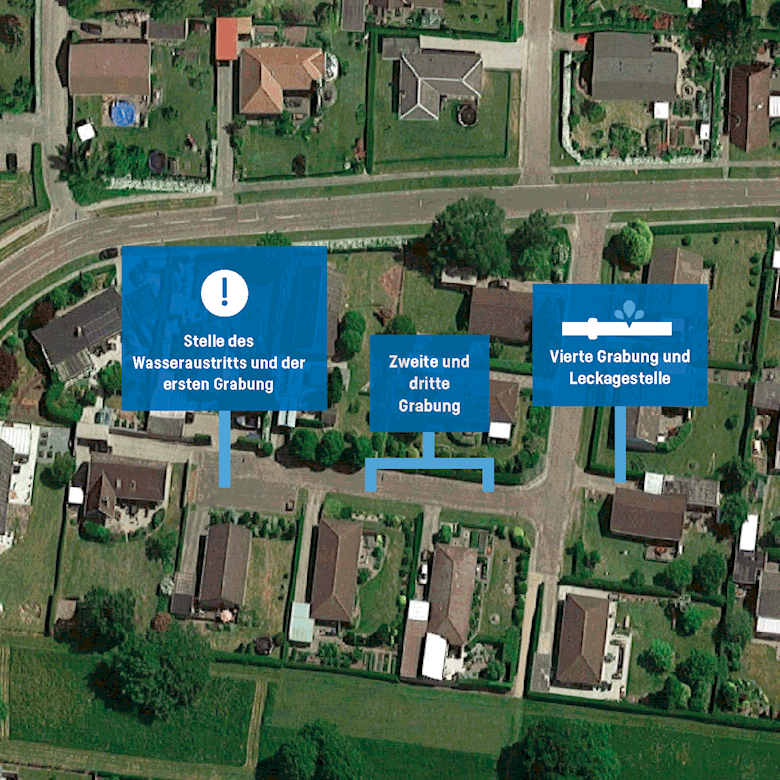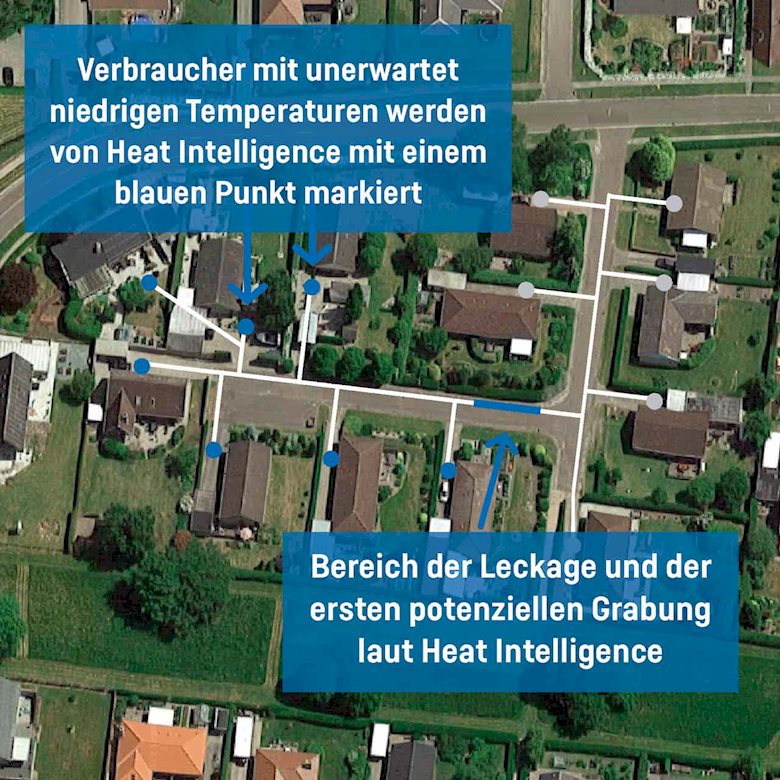Posted on Monday, March 4, 2019 by Bjarne Sig Halkjær
How Data could have Reduced the Number of Diggings for a Leak By 75%
How a local district heating utility could have used data from intelligent meters to locate the point of leakage – and save time, resources and money in the process.
There is a leak!
On October 9th, the utility received a call from a customer, who explained how water was pouring out from the ground in their driveway. That same day Assens changed their distribution network settings from summer to winter time – a change that typically causes sudden pressure surges and temperature changes in the network. Those quick changes can be “the final blow” to already weak points which can cause bursts and leaks. And that is exactly what happened on October 9th in Assens.
The customer lives at the end of the road in a residential neighbourhood of 6 houses. Therefore, Assens FV sent out a trencher and dug down exactly where the water was pouring out – only to find no leakages. They could however see that water was running inside the pipe between the insulation. That is how they knew that the leak had to be located further upstream in the network – so that is why Assens FV dug a hole a bit further upstream. Again, to come up with the same conclusion – “no leak here, let’s check further upstream”.
Assens FV ended up digging four times before the leak was actually found.
Searching, finding and fixing the leakage took two days for two men and a trencher. The following asphalt construction and the loss of 30m3 of water were aditional costs.
How Heat Intelligence could have found that leak.
Since the leakage in October, Assens FV has implemented our analytics programme Heat Intelligence. Heat Intelligence is based on hourly or alternatively daily meter data values. It is possible to include historic values into the Heat Intelligence database if they are available from i.e. READy - our remote meter reading application.
In Assens’ case, these data were in fact available. We decided to run the Heat Intelligence programme for the same days in October to see if it would have been possible to detect the leakage with Heat Intelligence. We also wanted to research if the programme could have optimized how the problem was handled.
After Heat Intelligence analysed the temperatures measured in the area of the leakage - before, during and after the leakage, we found that it would have been possible – not only to find out there was a leakage in the area but also to pinpoint the location of the leakage.
Heat Intelligence displayed a sudden drop in temperatures indicating a much higher heat loss than usual for the network in the neighborhood. The Heat Intelligence System detected decreases in temperature throughout the network up until the point where they dug the 4th time.
Assens FV could have limited the number of diggings to 1 instead of 4. The reason for that is that the temperature deviations clearly indicates where the problem starts and ends. This limits the area of a potential leakage. Assens FV would have been able to reduce both costs for digging and water loss significantly – just by analysing the data available in Heat Intelligence.
Want to dig for more information on Heat Intelligence?
If you want to know more about analytics and Heat Intelligence, you can read more about it right here.



